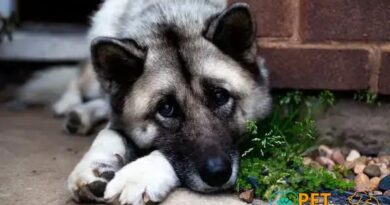What is dog agility training
What is Dog Agility Training?
Dog agility training is a competitive sport that involves a handler directing a dog through a timed obstacle course. The course typically includes jumps, tunnels, weave poles, and other challenges that test the dog’s speed, accuracy, and obedience. This sport not only showcases the dog’s physical abilities but also strengthens the bond between the dog and its handler through teamwork and communication.
The History of Dog Agility Training
Dog agility training originated in the late 1970s in the United Kingdom as a demonstration event at a dog show. Inspired by equestrian jumping events, it quickly gained popularity and evolved into a formal sport. Today, agility competitions are held worldwide, with various organizations governing the rules and standards, making it a beloved activity for both dogs and their owners.
Benefits of Dog Agility Training
Engaging in dog agility training offers numerous benefits for both dogs and their handlers. It provides physical exercise, mental stimulation, and an outlet for natural instincts. Dogs learn to navigate obstacles, improving their coordination and confidence. Handlers also benefit from the training, as it fosters a deeper understanding of their dog’s behavior and enhances their communication skills.
Essential Equipment for Dog Agility Training
To participate in dog agility training, specific equipment is necessary. Common obstacles include jumps, tunnels, A-frames, seesaws, and weave poles. These items can be purchased or homemade, depending on budget and space. It’s important to ensure that the equipment is safe and suitable for the dog’s size and skill level to prevent injuries during training sessions.
Getting Started with Dog Agility Training
Starting dog agility training requires patience and consistency. Begin with basic obedience training to establish a strong foundation. Gradually introduce agility obstacles, allowing the dog to become familiar with each one. Positive reinforcement techniques, such as treats and praise, are essential to encourage the dog and build its confidence as it learns to navigate the course.
Training Techniques for Dog Agility
Effective training techniques for dog agility include shaping, luring, and targeting. Shaping involves rewarding the dog for successive approximations of the desired behavior, while luring uses treats to guide the dog through obstacles. Targeting teaches the dog to touch a specific object, which can be useful for directing it during a course run. Combining these methods can lead to successful training outcomes.
Common Challenges in Dog Agility Training
Handlers may encounter various challenges during dog agility training, such as distractions, fear of obstacles, or lack of focus. It’s crucial to address these issues with patience and understanding. Gradually exposing the dog to distractions and using calming techniques can help. Additionally, breaking down complex obstacles into smaller, manageable tasks can alleviate fear and build confidence.
Dog Agility Competitions
Once a dog has mastered agility training, it can participate in competitions. These events are categorized by skill level, allowing dogs of all abilities to compete. Handlers must navigate the course within a set time limit while ensuring their dog completes each obstacle correctly. Competitions are a fantastic way to showcase the hard work and dedication put into training, as well as to meet fellow dog enthusiasts.
Choosing the Right Dog for Agility Training
While many breeds can excel in dog agility training, certain breeds are particularly well-suited for the sport. Breeds such as Border Collies, Australian Shepherds, and Shetland Sheepdogs are known for their intelligence, agility, and eagerness to please. However, mixed breeds and other dogs can also thrive in agility training with the right motivation and training approach.
Maintaining a Healthy Dog for Agility Training
To ensure a dog is fit for agility training, regular veterinary check-ups and a balanced diet are essential. Maintaining a healthy weight and providing adequate exercise outside of agility training will contribute to the dog’s overall well-being. Additionally, incorporating rest days into the training schedule helps prevent injuries and keeps the dog mentally and physically prepared for the challenges ahead.



